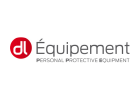Verallia France, producer of glass packaging for food and beverage products, and the Rémy Cointreau group have made a joint commitment to using lighter bottles and more recycled glass.
The companies have a historic partnership supporting a joint commitment to the environment.
Verallia France has worked with customers who share its ambition to reduce the environmental footprint of glass, and in particular its carbon impact.
Rémy Cointreau group, which supports and promotes the concept of “sustainable exception” as one of its core values, is investing in reducing its environmental footprint and achieving “net zero” by 2050.
In recent years, the increase in the percentage of cullet used in Verallia’s furnaces has enabled Rémy Cointreau to significantly reduce the environmental impact of its spirits bottles, in particular Rémy Martin VSOP and Cointreau, which now contain more than two-thirds cullet (recycled glass).
The group is also implementing reduction projects across its entire portfolio. Three of the spirits brands – Mount Gay rum, St-Rémy brandy and Belle de Brillet liqueur already use these initial reductions (between -2% and -11% of the glass weight of the bottles), lowering carbon emissions linked both to producing the glass and transporting the bottles.
Verallia France President, Pierre-Henri Desportes said: “Each time we make a bottle lighter there is a new development process: design office, tests, then industrial production. We work closely with our customers to develop the new containers. Shaped bottles, like those used by the Rémy Cointreau group, pose technical challenges for our factories. In addition to the shape (square, pear shaped, etc.), we have to consider all the details, such as the engravings. On top of the objective of reducing the environmental impact, we take care to preserve the the brand identity. With these bottle-lightening projects, Verallia uses its industrial expertise to support its long-standing partners.”
Rémy Cointreau Group Operations Director, Patrick Marchand said: “Reducing the environmental footprint of our bottles over time can only come about as a joint effort. The first step is to halve our carbon footprint per bottle by 2030. To this end, we are reviewing our entire portfolio with the ultimate goal of 100% of our bottles being eco-designed and recyclable (or reusable). The combination of expertise and our two groups’ shared environmental values contributes to rapid innovation and the emergence of sustainable solutions, of which we are particularly proud.”


























